Are you missing out on customers by relying solely on organic traffic? What if the key to explosive digital growth lies in mastering paid traffic sources that your competitors overlook? Whether you’re new to digital marketing or a seasoned pro, this article will reveal actionable paid traffic secrets to amplify your reach—right now. Dive in and discover how the world’s fastest-growing businesses use paid ads to dominate their industries.
Are You Leveraging Paid Traffic to Its Full Potential?
- Discover the transformative impact of paid traffic on your marketing success.
- Learn why leading businesses prioritize diverse traffic sources for sustainable digital marketing growth.

Modern digital marketing is fiercely competitive. Marketers who understand how to strategically use paid advertisements and continually optimize their paid traffic campaigns consistently pull ahead. If most of your effort goes into organic search, you may be overlooking an entire spectrum of highly effective traffic sources. Paid traffic offers near-instant access to ready-to-convert audiences, granular targeting options, and scalable results. Top brands invest heavily in this approach, seeing it as a cornerstone of any successful marketing strategy. The secret isn't just spending more—it's about aligning the right paid traffic source with each stage of your marketing funnel and objectives. Let’s dive in to see why paid traffic is vital for every digital marketer.
Understanding Paid Traffic: What Every Marketer Should Know
What is Paid Traffic in Digital Marketing?
Paid traffic is any visitor that lands on your site as a direct result of clicking a paid ad on platforms such as Google Ads, Facebook, or Instagram. Unlike organic traffic, these visitors are acquired through financial investment in digital ad placements, which are shown in prominent areas across search engines and social media platforms. Paid traffic isn’t just about boosting your website traffic—it’s about gaining precise control over who sees your message, when, and where. By investing in the right paid ad campaign, you can reach your intended target audience at scale—fast.
Today’s digital marketing landscape provides unprecedented opportunities thanks to paid traffic. Paid ads bypass slow, fluctuating SEO results, delivering immediate visibility for new products or services. With options ranging from search engine advertisements to influencer-driven campaigns and display ads, the spectrum of available traffic sources enables marketers to customize their approach to fit every audience and goal.
Paid Traffic vs. Organic Traffic: Key Differences
The primary difference between paid traffic and organic traffic lies in how users arrive at your website. Paid traffic originates from advertising spend—think of sponsored search engine results or display ads on a media platform. This provides companies with instant exposure and a predictable flow of visitors. In contrast, organic traffic grows over time by ranking in unpaid search results through content marketing, SEO, and authority-building. While organic builds credibility and trust, it often takes months to see meaningful results.
Most successful brands leverage both types for optimal performance. Paid ads are perfect for driving immediate results, testing new offers, or outpacing competitors in saturated markets. Organic traffic is essential for long-term growth and authority, providing more sustainable results over time. Knowing when—and how—to combine these strategies is a hallmark of an effective digital marketing plan.
Types of Paid Traffic Sources: An Overview
- Affiliate marketing
- Paid search and display ads
- Native ads and social media campaigns
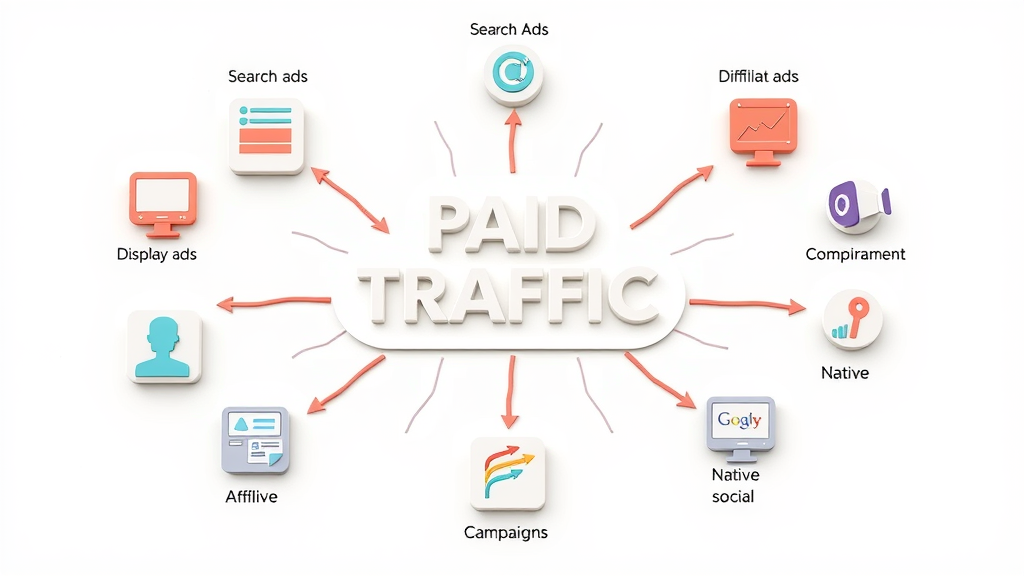
Paid traffic sources are diverse and evolving:
- Affiliate marketing partners incentivize influential websites or personalities to drive high-quality leads to your offer, often in exchange for commission-based compensation.
- Paid search and display ads utilize search engines and media networks to place attention-grabbing advertisements exactly where your audience is searching or browsing.
- Native ads and social media campaigns blend in with surrounding content, making them less intrusive and highly engaging—especially on platforms like Instagram or LinkedIn.
Why Paid Traffic Remains a Core Digital Marketing Traffic Source
The Role of Paid Advertising in Driving Results
Paid advertising is a growth catalyst for modern brands. By targeting specific demographics, interests, or search queries, businesses can direct the right message to the right prospects at the perfect moment. The scalability of paid ad campaigns means they work just as well for new launches as for mature, data-driven optimization in established brands. When executed properly, paid traffic delivers a measurable return on investment by generating new leads, boosting sales, and improving customer lifetime value.
Immediate feedback and analytics provided by most paid ad platforms give marketers insight into what’s working and what needs adjusting. This data-centric approach enables continuous refinement of ad copy, landing page design, offer structure, and targeting settings for maximized results.
How Paid Ad Campaigns Complement Organic Traffic
Integrating paid ad campaigns with organic traffic is a strategic power play. While organic efforts steadily build your site’s authority and trust with both search engines and users, paid campaigns can jump-start visibility or fill gaps in website traffic during seasonal downturns or competitive pushes. In highly competitive sectors, a combined approach ensures your brand maintains both fast, short-term wins and long-term growth.
"Paid traffic isn’t just about buying clicks – it’s about strategically investing for measurable digital marketing outcomes."
Brands achieving the best results leverage retargeting—using paid advertising to re-engage users who initially came organically but didn’t convert. Using analytics, you can discover which channels are driving the highest lifetime value and allocate your budget and SEO resources accordingly.
When to Choose Paid Traffic Over Organic Traffic
Certain circumstances make paid traffic the clear winner. If you’re launching a new product or need fast results, paid ads generate immediate visits and measurable conversions. Entering a crowded market? Paid ad campaigns can help you break through noise and get noticed, even if your organic rankings lag behind. Finally, for time-sensitive promotions or events, waiting for organic content to rank is simply not an option—paid ads let you capitalize on windows of opportunity instantly.
While both strategies are necessary, savvy digital marketers know when to shift resources. If your organic traffic pipeline is underperforming, layering in paid traffic campaigns provides the spark needed to quickly ramp up website traffic and test new ideas.
Exploring Paid Traffic Sources for Immediate Results
Major Paid Traffic Sources: Platforms to Consider
- Google Ads, Facebook Ads, Instagram Ads
- Native advertising networks, Affiliate marketing campaigns
- Emerging paid traffic channels
Choosing the right paid traffic source is essential for campaign success. Google Ads remains the go-to platform for targeted search and display advertising, offering unmatched reach and robust targeting options. Facebook and Instagram add lightning-fast audience insights and segmentation, while native ad networks help you blend promotional content seamlessly into top media websites and apps.
Affiliate marketing campaigns harness the power of partnerships, leveraging third-party influencers or publishers to reach highly engaged audiences. As the digital marketing space grows, emerging channels—like TikTok, programmatic video, or podcast sponsorships—also deserve attention. Each paid traffic source has its own unique strengths, audience profiles, and pricing structures.
How to Select the Best Paid Traffic Source for Your Business
Choosing the right paid traffic source depends on factors like your industry, goals, and available budget. Use questions such as: Where does my target audience spend time online? Which platform excels at delivering leads or sales for businesses like mine? Successful marketers continually test across multiple channels, then double down on what converts best.
| Paid Traffic Source | Average Cost | Targeting Options | Effectiveness | Audience Reach |
|---|---|---|---|---|
| Google Ads | $$-$$$ | Keywords, Demographics, Device | High | Largest—Search Engines |
| Facebook/Instagram Ads | $-$$ | Location, Interests, Behaviors | Very High | Massive—Social Media |
| Native Advertising | $$ | Contextual, Interest-Based | Moderate-High | Growing—Content Sites |
| Affiliate Marketing | Pay-For-Performance | Publisher/Influencer Match | Varies | Specialized—Niche Audiences |
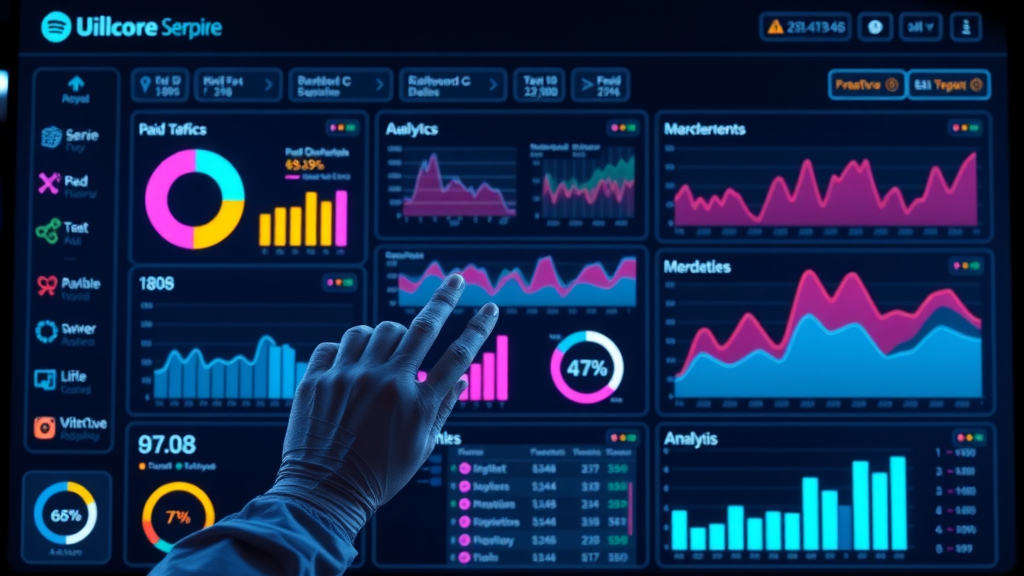
The goal is to align your campaigns with platforms that fit your product, audience, and marketing objectives. For some, broad platforms like Google work best; others find niche affiliate or native ad networks yield better ROI. Don’t overlook new platforms—early adopters often find more affordable and less competitive ad space.
Paid Search, Display Ad & Native Ads: Maximizing Engagement
What is Paid Search and How Does it Work?
Paid search is a foundational online advertising strategy. Your ads appear at the top of search engine results, triggered by keywords your target audience is actively searching for. You set a budget and bid on keywords such as “best video editing software” or “fitness gear deals.” When users search for these terms, your advertisement is displayed as a “sponsored” result—driving motivated traffic to your landing page.
The beauty of paid search is reach and intent. Unlike some forms of digital advertising, users are already seeking answers or solutions. Platforms like Google Ads allow for robust tracking and real-time optimizations, so you can continually refine your traffic campaign for higher click-through and conversion rates.
Leveraging Display Ads for Brand Awareness
Display ads are visually-driven advertisements shown on websites, apps, or videos within expansive ad networks. Coming in formats like banners, sidebars, and video popups, these digital ads boost brand awareness and keep your offers top-of-mind even when prospects aren’t searching for you directly. Display ad campaigns can be highly targeted by context, demographic, or retargeted based on previous site visitors.
Savvy marketers leverage advanced creative—such as responsive display ads—to adapt layouts and messaging dynamically to suit each user’s context. Use display ads to reach users across thousands of media platforms, increasing familiarity and trust while guiding them through your marketing funnel.
Native Ads: Finding Your Audience in Disguise
Native ads integrate promotional messages into the design and content of the website or platform, appearing less like “ads” and more like relevant recommendations. This builds trust and increases engagement, as users are more likely to interact when the ad feels authentic and valuable in the moment. Social media feeds, in-feed content, and sponsored recommendations on news outlets frequently use this model.
"Display ads create awareness, while native ads build trust – both are foundational paid traffic strategies."
- Responsive display ad
- Sponsored content
- In-feed native ads
Choosing between display and native advertising depends on your goals, but the best campaigns use both. First, deploy display ads for reach and awareness. Then, reinforce these messages with native ads to blend into user experiences and drive conversions.

Building Effective Paid Traffic Campaigns that Convert
Setting SMART Goals for Your Paid Traffic Campaign
The backbone of every successful paid traffic campaign is a clear objective. Set SMART (Specific, Measurable, Achievable, Relevant, Timely) goals—such as increasing email subscriptions by 20% in two months, or achieving 5X return on ad spend over a quarter. These targets will inform your platform selection, creative strategy, and analytics setup.
Vague objectives rarely yield actionable insights. Instead, frame your goals with exact metrics and deadlines, and break them into milestones for testing and adjustment. From here, you’ll know where your advertising dollars are moving the needle and where to optimize.
Crafting a Compelling Landing Page for Paid Traffic
Your landing page is where traffic converts—or bounces. For maximum effect, ensure each campaign points to a dedicated landing page aligned with your ad’s message and promise. Minimize distractions, use a clear value proposition, and make calls-to-action unmistakable. Include social proof, ensure mobile responsiveness, and reduce load times.
- Essential elements: headline, CTA, value proposition, visual cues
The best landing pages utilize visual cues (arrows, contrasting colors, images) to guide visitors’ eyes to opt-in forms or sales buttons. A/B test layouts, messaging, and media to continuously improve performance. Integration between your ad copy and landing page storytelling increases trust—and conversion rates.
Crafting a Profitable Traffic Campaign: Step-by-Step
- Budget setting
- Creative development
- A/B testing
- Analytics integration
Start by allocating a test budget—enough to collect statistically significant data but not so much you risk large losses. Develop creative assets (copy, images, video) tailored for your audience and upload to your chosen paid traffic sources. Run experiments with different versions (A/B testing) to see which approach converts best. Connect all campaigns to analytics tools (Google Analytics, Facebook Pixel, etc.) to monitor and optimize in real time.
Tracking, Measuring, and Optimizing Paid Traffic Campaigns
Without tight measurement, your paid traffic marketing strategy quickly loses its edge. Use analytics to monitor each traffic source’s cost, click-through rate, and most significantly—conversion rate at the landing page. Optimize creative, targeting options, and bidding strategies accordingly for continuous improvement.
"The real secret to paid traffic success? Relentless optimization and data-driven adjustments."
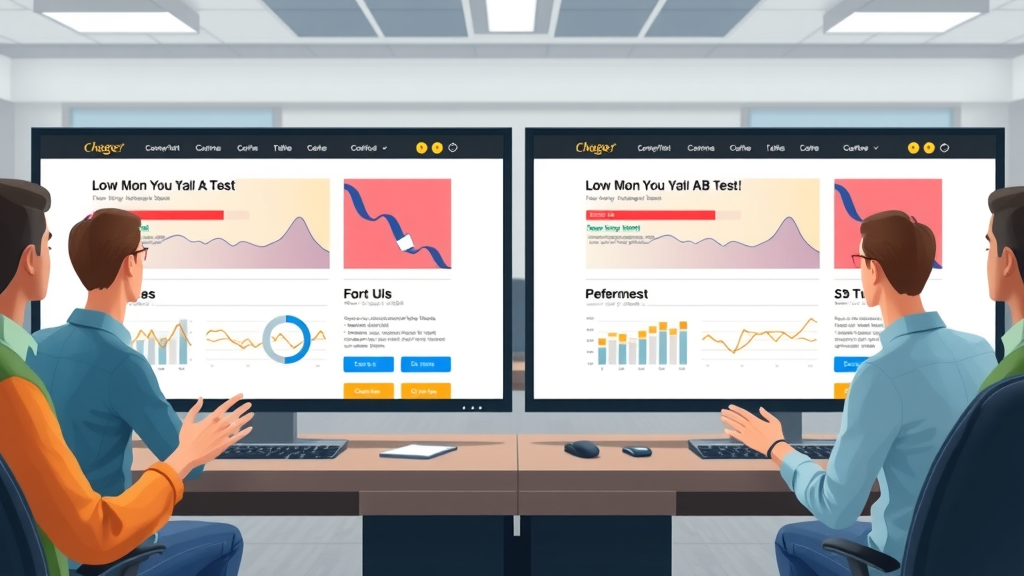
Paid Traffic Sources vs. Organic Traffic Sources: Striking the Right Balance
Combining Paid and Organic Traffic for Maximum Impact
Savvy marketers know that paid and organic traffic work best hand in hand. Paid campaigns deliver rapid exposure, while organic builds reputation, loyalty, and long-term rankings. Combining the two means you can fill gaps in coverage, accelerate new launches, and reinforce your messaging across all key digital marketing channels. Use paid ads to identify high-converting audiences, then transition successful keywords and segments to organic campaigns for compounding results.
Hybrid strategies—such as retargeting organic visitors with paid ad offers—keep your brand top of mind and increase conversion rates. Regularly switch resources based on seasonal trends, campaign data, and ROI metrics for optimal efficiency.
Pros and Cons Chart: Paid Traffic Sources vs. Organic Traffic
| Approach | Strengths | Drawbacks | Best Use Cases |
|---|---|---|---|
| Paid Traffic | Immediate results, scalable, precise targeting, easy to test/iterate | Requires ongoing budget, ad fatigue, short-term focus if not managed | Product launches, seasonal promotions, rapid testing |
| Organic Traffic | Cost-effective over time, credibility, long-term growth | Slow build, harder to control, SEO algorithm risk | Authority building, brand loyalty, informational content |
- Situations where paid or organic excels
- Synergizing strategies for hybrid campaigns
"A robust marketing funnel fuses the speed of paid traffic with the trust of organic traffic."
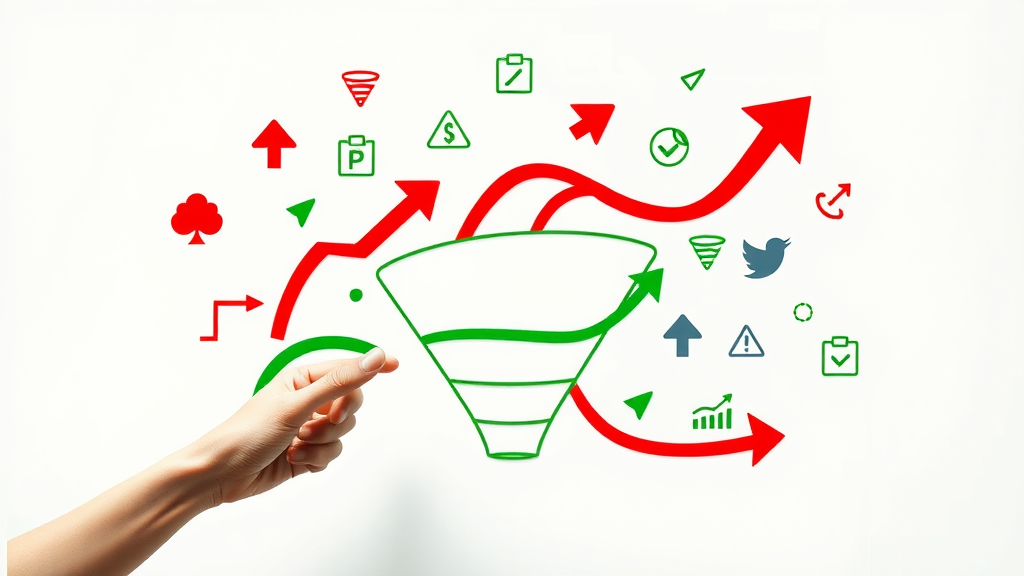
Social Media Traffic Source Tactics: Amplifying Paid Traffic Performance
Popular Social Media Paid Traffic Sources: Facebook, Instagram, LinkedIn
Social media paid traffic sources excel in precision targeting, creative storytelling, and engagement. Platforms like Facebook, Instagram, and LinkedIn offer industry-best targeting options—letting you zero in on age, gender, location, job title, interest, and behavioral cues. Video ads, influencers, and in-app shopping features make these platforms ideal for rapid campaign experimentation and audience growth.
Organic competition is fierce on these platforms, but with paid campaigns, you gain unprecedented control and visibility. Each social media platform provides in-depth metrics and flexible ad formats to suit every objective.
- Key social platforms with notable paid traffic features
Targeting Best Practices for Paid Social and Display Ads
For successful paid traffic campaigns , start with thorough audience research. Create detailed personas, use platform analytics to uncover behaviors, and refine your targeting over time based on real results. Employ lookalike and retargeting audiences whenever possible. Match creative content to each audience segment—personalized messaging significantly outperforms generic ads.
Split testing is vital in paid social media and display ad campaigns. Test different headlines, images, and call-to-action buttons to see what resonates. Use platform suggestions to update targeting and exclude low-performing segments—concentrating your budget on what matters most.
Retargeting and Behavioral Segmentation Strategies
Retargeting allows you to reach users who have already interacted with your brand—whether through visiting your landing page or engaging on social media. Segment your audience according to behaviors like abandoned carts, video views, or newsletter signups, and custom-tailor your offers to each stage in their journey. Behavioral segmentation combined with retargeting increases efficiency and conversion, transforming “window shoppers” into loyal customers.
"Social media paid traffic thrives on precision targeting and compelling content."

Google Ads & Affiliate Marketing: Key Players in Paid Traffic
Mastering Google Ads as a Paid Traffic Source
Google Ads is the most popular paid traffic source for marketers aiming to capture demand-driven audiences. By bidding on carefully selected keywords, you attract users actively searching for solutions you provide. Layer on advanced features—like device targeting, ad extensions, conversion tracking, and automation—for campaign refinement.
Smart marketers review keyword performance and conversion data daily. By consistently optimizing bids, ad copy, and audience targeting, they cut wasted spend and maximize ROI from their paid traffic campaigns.
Affiliate Marketing Traffic Sources: Building Profitable Partnerships
Affiliate marketing works by leveraging established audiences on partner websites, blogs, or social media through serialized content, reviews, or banner placements. The beauty? You pay for performance—meaning you only compensate affiliate partners for actual leads, clicks, or sales. This creates powerful win-win synergies, and when done at scale, brings in high-quality traffic beyond what direct advertising could reach.
Choose affiliates whose audiences naturally align with your own, provide them with creative assets and tracking links, and structure deals for mutual growth. Monitor closely for fraudulent traffic and optimize ongoing promotions to grow recurring revenue streams.
Integrating Google Ads and Affiliate Marketing Efforts
The most effective strategies combine Google Ads and affiliate marketing for diversified, sustainable growth. Use data from Google ad campaigns to inform the content and offers presented to affiliates and vice versa for holistic optimization. Share best-performing landing pages, funnel copy, and creative assets across channels.
| Metric | Google Ads | Affiliate Marketing |
|---|---|---|
| Cost-per-click | $$ | N/A (pay-for-performance) |
| Audience Targeting Depth | Very High | Medium/Aligned with Affiliate |
| Average ROI | Varies (can be high with optimization) | Depends on affiliate quality and alignment |
| Conversion Rate | Good—Intent Driven | Varies—Niche Audiences |
- Action steps for campaign integration and synergy

Native Advertising & Emerging Paid Traffic Opportunities
Why Native Advertising Wins User Trust
Native advertising succeeds by mirroring the look, feel, and function of the platform in which it appears. This reduces “banner blindness,” making users more receptive and engaged. Native ads drive higher click-through and conversion rates compared with traditional display ad formats, especially when content is genuinely helpful and closely matches user intent.
If building trust and credibility is a top priority, native ads offer a seamless, user-first way to nurture new relationships and drive high-intent traffic.
Discovering New Paid Traffic Sources: Trends and Innovations
The digital marketing landscape is constantly evolving—so are paid traffic sources . In 2024, expect growth in audio ads (podcast sponsorships), influencer marketing, and emerging social platforms. AI-driven programmatic advertising is also on the rise, buying and optimizing ad placements in real time for maximum relevance and ROI.
Keep an eye on how consumer behavior shifts—especially among Gen Z and Millennials who favor video content and immersive experiences on channels like TikTok, Twitch, and YouTube Shorts.
Optimizing Native Ads for Paid Traffic Conversion
- Checklist: Must-do steps for native ad campaign
For the best results, follow a checklist:
- Craft ads tightly aligned to the platform’s native voice and format.
- Disclose sponsorship transparently while emphasizing value.
- Use striking visuals but avoid intrusive sales language.
- Drive to a matching landing page that continues the conversation naturally.
- Test multiple headlines, thumbnails, and calls-to-action for conversions.
- Monitor and iterate campaigns based on analytics and user feedback.
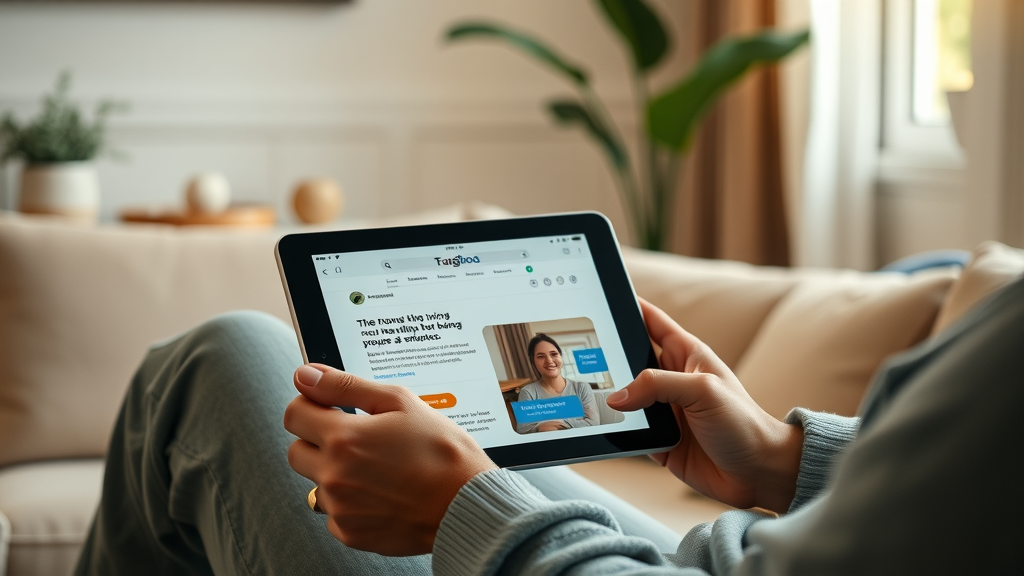
Paid Traffic Campaigns: Monitoring, Analytics, and Adjustments
Key Paid Traffic Metrics to Track and Why They Matter
To ensure your paid traffic campaigns pay off, obsess over the right metrics: click-through rate (CTR), conversion rate, cost per click (CPC), return on ad spend (ROAS), and customer acquisition cost (CAC). Tracking these will show you which platforms and creatives perform, and where to reallocate budget or adjust strategy.
Performance insights also guide future experimentation—allowing you to reduce wasted spend, double down on winning ads, and uncover new opportunities for paid and organic synergy.
Diagnostic Tools for Campaign Success
Maximize your success by leveraging top analytics and diagnostic tools:
- Google Analytics – Detailed website traffic tracking
- Facebook Pixel – Conversion and retargeting insights
- UTM Parameters – Source tracking in every ad
- Heatmapping Software – User journey visualization
- Custom Dashboards – Aggregate multi-channel data
Combine platform-specific dashboards with third-party tools for holistic views of your campaigns’ health. Implement tracking from day one and make adjustments weekly for best results.
Iterating Campaigns Based on Analytics and ROI
Continuous optimization should drive every paid strategy. Run A/B tests, pause underperforming ads, tweak landing pages, and reallocate budget to top traffic sources. Analyze ROI at every step and iterate ruthlessly.
A data-driven approach is the surest way to unlock paid traffic secrets. Regular refinements create compound improvements and give your brand an enduring advantage in digital marketing.
Essential Lists: Paid Traffic Best Practices for 2024
- List: 10 actionable paid traffic optimization secrets
- Leverage granular audience targeting and retargeting
- Launch with a test budget and scale winners
- Craft compelling, value-rich ad copy and creative
- Align every ad with a relevant, high-converting landing page
- Thoroughly track each campaign with UTM parameters
- Test multiple platforms for best-fit traffic sources
- Pace budgets to avoid ad fatigue and market burnout
- Review analytics weekly and adjust campaigns dynamically
- Stay updated on evolving ad formats and compliance changes
- Collaborate with top affiliates for extended reach
- Checklist: Avoiding common paid traffic mistakes
- Don’t target too broad or too narrow an audience
- Avoid sending all traffic to a generic homepage
- Never neglect negative keyword lists in paid search
- Steer clear of misleading creatives or clickbait
- Don’t set-and-forget: review campaigns at least weekly
- Avoid duplicate campaign objectives across channels
- Don’t ignore new traffic sources and trends
- Skip untracked links—invest in analytics setup
- Resist “lowest CPC” syndrome—focus on ROI, not just cost
People Also Ask: What is meant by paid traffic?
- Paid traffic refers to any visitors accessed through advertising on search engines, social media, or other platforms, as opposed to earning visitors organically through non-paid means.
People Also Ask: Is paid traffic worth it?
- Paid traffic is worth it when expertly targeted, as it provides rapid audience exposure, immediate results, and measurable performance that can lead to high returns when managed strategically.
People Also Ask: What is paid traffic vs organic traffic?
- Paid traffic comes directly from ads, while organic traffic comes from unpaid search results. Both have unique strengths: paid offers speed, organic builds long-term trust.
People Also Ask: How to do paid traffic?
- To do paid traffic, select suitable platforms (Google Ads, Facebook Ads, etc.), set goals, define target audiences, craft compelling creative, build a conversion-focused landing page, and optimize using analytics.
Quick-Start Guide: Launching Your First Paid Traffic Campaign
- Define objectives and KPIs
- Choose a relevant paid traffic source
- Allocate budget wisely and craft ad creative
- Monitor campaign and iterate quickly
FAQs
- What is the cost of an average paid traffic campaign? Costs vary by platform and industry, ranging from a few dollars per day for small tests to thousands for larger campaigns. Most businesses can get started with a test budget of $500–$1,000, then scale based on success.
- How do I select the right traffic source for my business? Choose platforms where your target audience spends time and where your offers have historically performed well. Test multiple channels and use real-world conversion data to select winners.
- Can paid traffic help my organic rankings? While paid traffic does not directly impact organic rankings, running paid campaigns can increase brand awareness, which in turn may lead to more searches, backlinks, and opportunities for organic growth.
- What’s the best way to track the effectiveness of paid traffic? Set up analytics with UTM parameters, conversion tracking, and custom dashboards. Monitor metrics like CTR, cost per conversion, and ROAS frequently.
- How long does it take to see results from paid advertising? Most businesses see initial results within a few days of launching a paid campaign. Full optimization typically takes anywhere from two to eight weeks depending on budget, platform, and goals.
Key Takeaways for Paid Traffic Success
- Invest in both paid and organic traffic for holistic digital marketing growth.
- Use strategic planning and analytics to adapt campaigns for maximum ROI.
- Test, measure, and optimize every paid traffic source for continuous improvement.
Ready to Skyrocket Your Results with Paid Traffic?
- Let's have a chat, call 904-385-5213
To deepen your understanding of paid traffic and its strategic implementation, consider exploring the following resources:
-
“A Beginner’s Guide to Paid Traffic” : This comprehensive guide by Mailchimp outlines the benefits of paid traffic, including speed, analytics, A/B testing, increased conversions, and audience targeting. ( mailchimp.com )
-
“5 Paid Traffic Sources Every Online Marketer Should Be Testing” : This article from Outbrain discusses various paid traffic sources such as YouTube Ads, Google Ads, LinkedIn Ads, Outbrain Smartads, and TikTok Ads, providing insights into their effectiveness and how to leverage them. ( outbrain.com )
These resources offer valuable insights into the nuances of paid traffic, helping you craft more effective and targeted marketing campaigns.
 Add Row
Add Row  Add
Add 



Write A Comment